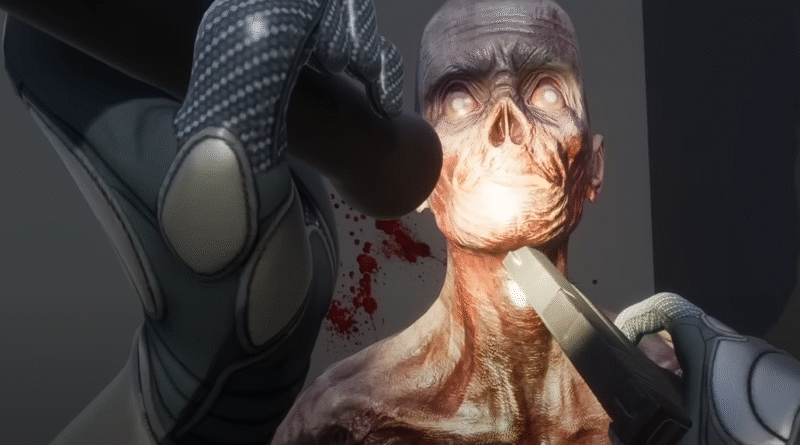Beyond the Sandbox: A Revolutionary VR Modding Platform Arriving in 2025
The virtual reality (VR) landscape is evolving at a staggering pace, with new innovations emerging constantly. Among the most exciting of these is Beyond the Sandbox, a multiplayer VR modding platform set to launch in Fall 2025. Powered by the cutting-edge Unreal Engine 5, this platform promises to revolutionize how VR content is created and experienced. But what exactly is Beyond the Sandbox, and why is it generating so much buzz in the VR community? At vrgamenews.com, we’ve taken a deep dive into everything this groundbreaking platform has to offer. Let’s embark on this thrilling journey into the future of VR together.
What is Beyond the Sandbox?
At its core, Beyond the Sandbox is a next-generation VR modding platform that harnesses the power of Unreal Engine 5. In the gaming and software world, modding refers to modifying existing content or adding new elements to it. In VR, this means creating entirely new virtual worlds, interactive objects, or experiences within immersive environments. Beyond the Sandbox aims to make this creative process not only more accessible but also much more powerful, enabling users to design, share, and collaborate on VR content like never before.
One of the platform’s standout features is its advanced physics engine and extensive modding capabilities. Leveraging Unreal Engine 5’s Chaos physics system, Beyond the Sandbox enables realistic physical interactions within VR environments. This results in content that feels much more immersive and believable, enhancing user engagement and interactivity. Moreover, the platform’s multiplayer structure allows multiple users to interact, collaborate, and experience creations together in shared virtual spaces.
The anticipation for Beyond the Sandbox’s Fall 2025 release is already building rapidly among VR enthusiasts, developers, and content creators worldwide. But what exactly makes this platform so important, and how could it reshape the VR ecosystem? Let’s explore these questions in detail.
The Power of Unreal Engine 5: A Technical Deep Dive
Behind Beyond the Sandbox’s impressive capabilities lies Unreal Engine 5 (UE5), developed by Epic Games, which has set a new benchmark for game and simulation development. UE5 introduces revolutionary graphical and physics technologies that elevate VR experiences to unprecedented levels.
Visual Fidelity and Graphics
UE5 incorporates groundbreaking technologies like Nanite and Lumen. Nanite is a virtualized geometry system that allows developers to import and render massive amounts of geometric detail in real-time without sacrificing performance. In practical terms, this means VR worlds can be filled with objects composed of billions of polygons, resulting in extraordinarily detailed and lifelike visuals.
Lumen, on the other hand, is a fully dynamic global illumination system that simulates realistic lighting and shadows in real-time. This enhances the immersion factor in VR by ensuring that light behaves naturally as players move through and interact with the environment. Shadows soften, reflections react to changing lighting, and ambient light bounces realistically, creating a truly believable world.
Beyond the Sandbox leverages these features to empower users to create VR content with cinematic-quality visuals. Whether designing complex architectural spaces or intricate objects, creators can now achieve unprecedented realism, making their virtual creations feel alive and tangible.
Physics and Interaction
The Chaos physics system is another core strength of UE5 utilized by Beyond the Sandbox. Chaos offers highly realistic destruction, simulation, and interaction mechanics that are a game changer for immersive VR. This physics engine allows for detailed simulation of physical behaviors such as object collisions, breakages, cloth dynamics, and fluid-like interactions.
For example, a user designing a VR battlefield can create structures that realistically crumble under force, or simulate debris scattering and environmental destruction that responds to player actions. Such physical fidelity dramatically deepens immersion and opens the door to complex gameplay mechanics or educational simulations.
By integrating Chaos, Beyond the Sandbox provides creators with tools to build physics-driven VR experiences, ranging from games with destructible environments to scientific models simulating real-world phenomena.
Modding Tools and Accessibility
UE5 comes equipped with a comprehensive suite of development tools aimed at both professionals and newcomers. Beyond the Sandbox takes advantage of these, offering an intuitive and user-friendly interface tailored for VR content creation and modding.
The platform supports Blueprint, Unreal Engine’s powerful visual scripting system, which enables users with little or no coding experience to create complex logic through an easy drag-and-drop interface. This lowers the entry barrier, allowing hobbyists, educators, and small studios to bring their VR ideas to life without needing to write extensive code.
Additionally, Beyond the Sandbox’s multiplayer functionality enables users to collaborate in real-time within the same virtual environment. Multiple creators can work together on a single project—one designing the environment, another scripting gameplay mechanics—facilitating faster development and richer creations. This collaborative approach is relatively unique in VR modding and can lead to innovative community-driven content that evolves dynamically.
Beyond the Sandbox in Context: VR Content Creation and Modding Ecosystem
Modding and user-generated content have long been vital parts of PC and console gaming, with platforms like Steam Workshop fueling vibrant creative communities. However, VR has lagged behind in this respect, largely due to technical and usability challenges.
Current VR content creation tools tend to be complex, requiring significant technical expertise and powerful hardware. Tools like Unity and Unreal Engine have been the mainstay for VR developers, but their steep learning curves and non-VR-native interfaces can limit broader community involvement.
Beyond the Sandbox addresses this gap by creating a VR-native platform where modding happens inside VR itself, making content creation more intuitive and immersive. This approach aligns with the growing trend of lowering barriers to entry in creative technologies, democratizing VR content production, and expanding the ecosystem of available experiences.
It’s also worth noting that beyond gaming, VR content creation platforms like Beyond the Sandbox could impact education, training, architecture, therapy, and virtual events by enabling easy customization and rapid prototyping of interactive environments tailored to specific needs.
Industry Trends Supporting Beyond the Sandbox’s Potential
Several industry trends highlight why Beyond the Sandbox could become a pivotal platform in the VR space:
- Rise of Social VR and Collaborative Spaces: Platforms like VRChat, Rec Room, and Horizon Worlds have demonstrated the popularity of shared social experiences in VR. By focusing on multiplayer modding and collaboration, Beyond the Sandbox taps into this demand for community-driven creativity.
- Growth of VR Hardware and Market: With next-gen VR headsets like Meta Quest Pro, HTC Vive XR Elite, and Sony’s upcoming PSVR2 pushing technical boundaries, there’s a growing audience hungry for diverse and high-quality content.
- Increasing Importance of User-Generated Content (UGC): Games like Roblox and Fortnite have built massive ecosystems around UGC, proving the value of platforms that empower players to create and share content.
- Advancements in Real-Time Graphics and Physics: Unreal Engine 5’s breakthroughs in graphics and physics have only recently become accessible enough for widespread use, enabling projects like Beyond the Sandbox to offer truly next-level experiences.
Looking Ahead: What Could Beyond the Sandbox Mean for VR’s Future?
When Beyond the Sandbox launches in Fall 2025, it could significantly accelerate the evolution of VR as both a medium and a creative outlet. By combining powerful technology with ease of use and social collaboration, it stands to:
- Expand the Variety and Quality of VR Experiences: More creators contributing diverse content will result in a richer ecosystem beyond the typical gaming titles, spanning education, art, simulations, and more.
- Empower Non-Technical Users: Artists, educators, and hobbyists will have new tools to express their creativity in VR without needing programming skills.
- Foster a Collaborative VR Creator Community: Real-time multiplayer modding can facilitate shared projects and mentorship, pushing VR content creation to new heights.
- Drive VR Adoption: As content variety and quality increase, more users will find compelling reasons to invest in VR hardware.
Conclusion: A New Frontier for VR Modding and Creation
Beyond the Sandbox represents a bold step forward in the democratization of VR content creation. Powered by Unreal Engine 5’s cutting-edge graphics and physics, combined with accessible modding tools and a multiplayer collaboration environment, it promises to transform how VR worlds are built and shared.
As the VR industry continues to grow and mature, platforms like Beyond the Sandbox will be crucial in shaping the medium’s future, moving VR beyond a niche entertainment format toward a broad creative platform accessible to many.
At vrgamenews.com, we will continue to closely follow Beyond the Sandbox and bring you the latest updates. Share your thoughts on this exciting development and stay tuned for more VR news!

